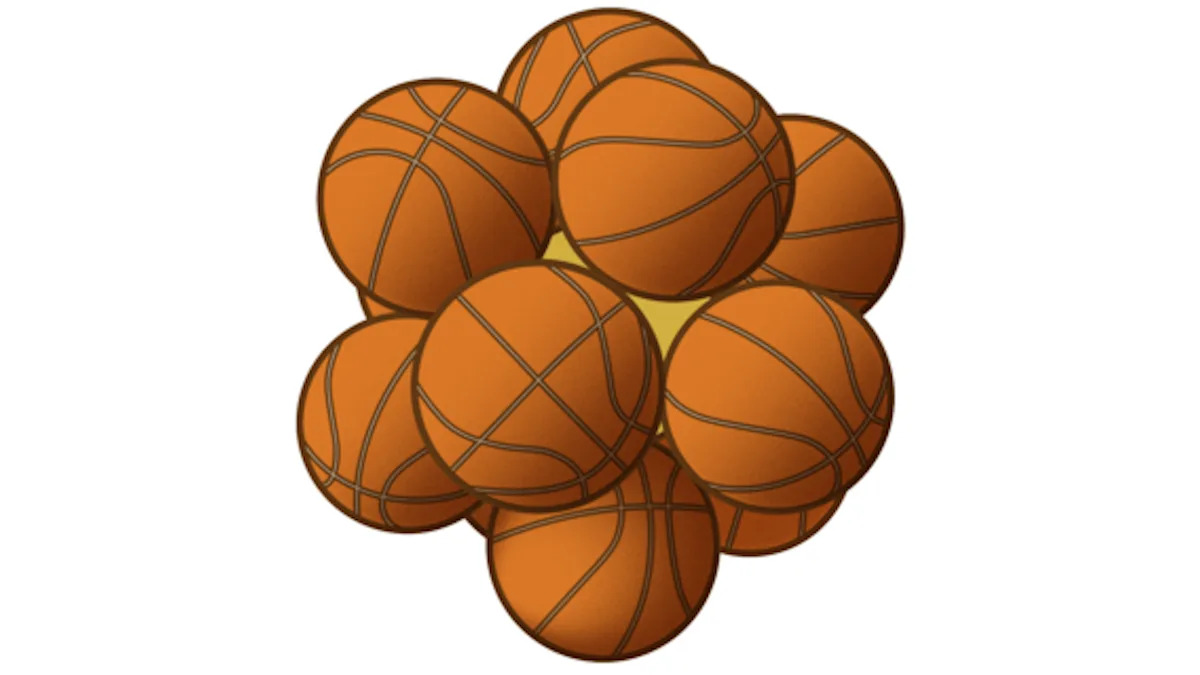In response to the growing demand from countries seeking to strengthen mental health services for children and young people, including school-based interventions, WHO and partnering governments have launched a multi-country knowledge exchange and…
Blog
-

Samsung’s Galaxy S21 FE gets final OS upgrade to Android 16
Although we’ve all adjusted pretty quickly to the modern seven-year software support standard set by Samsung and Google, it’s easy to forget it’s still a relatively new shift. There are still plenty of devices with four years…
Continue Reading
-

Italy’s film industry warns of damage from government funding cut
ROME, Oct 23 (Reuters) – Italy’s film industry, renowned for…
Continue Reading
-

DIFC amendment to the Data Protection Law
The DIFC recently announced that it had enacted an amendment to the Data Protection Law, following an earlier consultation in March.
Summary
The right for data subjects to claim compensation for damage they have suffered by reason of a contravention of their rights under data protection law is established in GDPR based countries, upon which the DIFC Data Protection Law is modelled. Claims of this nature have become increasingly common over the past five or six years in those jurisdictions.
- The introduction of a private right of action through the DIFC courts for data subjects whose rights under the law have been contravened; and
- A widening and clarification of the scope of the application and extraterritorial scope of the law, which applies to:
- A Controller or Processor who processes personal data and is incorporated in the DIFC, regardless of whether or not the processing takes place in the DIFC; and
- A Controller, Processor or Sub-processor, processing personal data in the DIFC regardless of their place of incorporation as part of stable arrangements.
Important points to note
Data subjects can claim for mere distress
They do not need to prove that they have suffered a recognised psychiatric injury as a result of the infringement. This reduces the barrier to entry as expert medical evidence is not required in order to issue a claim.
The data subject can claim compensation from both the Controller or the Processor
This is important for Processors to bear in mind as whilst the bulk of the responsibility generally sits with the Controller e.g. notifying the Commissioner and affected data subjects of a personal data breach, this amendment makes clear that Processors will be held liable in circumstances where their unlawful actions, or inappropriate security measures result in harm to data subjects.
A Controller or Processor is not liable if they can prove that they are in no way responsible for the event giving rise to the damage
The burden lies with the Controller or Processor to demonstrate this when seeking an exemption from liability.
For example, if an organisation utilises the services of a third party payment provider, and as a result of a compromise of that payment provider’s systems, the organisation’s customer data is exposed, they may have a defence under Article 64A(4) if they had performed appropriate due diligence before selecting the payment provider (the Processor) and had a valid data processing agreement in place.
In these circumstances the Controller may be able to evidence that the event giving rise to the damage sits squarely with the Processor (albeit the Processor may have their own defence under this Article, for example if this incident was caused by the exploitation of a zero-day vulnerability for which there was no patch yet) and thereby escape liability.
We expect to see a gradual increase in data subject claims as individuals become more informed about their rights and how to exercise them.
Continue Reading
-

King Charles and Pope exchange gifts and pray together for first time
A symbolic moment of joining up the dots of historypublished at 13:41 BST
Sean Coughlan
Royal correspondent, reporting from the VaticanWe’re inside the Basilica of St Paul’s Outside the Walls and
it is absolutely massive, even…Continue Reading
-

Toward stable replication of genomic information in pools of RNA molecules
We simulate the dynamics of VCG pools using a kinetic simulation that is based on the Gillespie algorithm. In the simulation, oligomers can hybridize to each other to form complexes or dehybridize from an existing complex. Moreover, two oligomers can undergo templated ligation if they are hybridized adjacent to each other on a third oligomer. At each time , the state of the system is determined by a list of all single-stranded oligomers and complexes as well as their respective copy number. We refer to the state of the system at the time as the ensemble of compounds . Given the copy numbers, the rates of all possible chemical reactions can be computed. To evolve the system in time, we need to perform two steps: (i) We sample the waiting time until the next reaction, , from an exponential distribution with mean , and update the simulation time, . (ii) We pick which reaction to perform by sampling from a categorical distribution. Here, the probability to pick reaction equals . The copy numbers are updated according to the sampled reaction, yielding . Steps (i) and (ii) are repeated until the simulation time reaches the desired final time, . A more detailed explanation of the kinetic simulation is presented in Göppel et al., 2022; Rosenberger et al., 2021.
Our goal is to compute observables characterizing replication in the VCG scenario based on the full kinetic simulation. In the following derivation, we focus on one particular observable (yield) for clarity. The results for other observables are stated directly, as their derivations follow analogously. Recall the definition of the yield introduced in the Results section,
As we are interested in the initial replication performance of the VCG, we compute the yield based on the ligation events that take place until the characteristic timescale of ligations . In principle, we would like to compute the yield based on the templated ligation events that we observe in the simulation. Unfortunately, for reasonable system parameters, it is impossible to simulate the system long enough to observe sufficiently many ligation events to compute to reasonable accuracy. For example, for a VCG pool containing monomers at a total concentration of and VCG oligomers of length at a total concentration of , it would take about 1700 hr of simulation time to reach (Figure 8). Multiple such runs would be needed to estimate the mean and the variance of the observables of interest, rendering this approach unfeasible.
Simulation runtime of the full kinetic simulation for a VCG pool that includes monomers and VCG oligomers of length .
The total concentration of feedstock monomers equals , while the total concentration of VCG oligomers is . The energy contribution per matching nearest-neighbor block is set to . The volume of the system is varied, and the time evolution is simulated until . The runtime of the simulation scales linearly with the volume of the system.
Instead, we compute the replication observables based on the copy number of complexes that could potentially perform a templated ligation, that is complexes in which two strands are hybridized adjacent to each other, such that they could form a covalent bond. We can show analytically that the number of productive complexes is a good approximation for the number of incorporated nucleotides: The number of incorporated nucleotides can be computed as the integral over the ligation flux, weighted by the number of nucleotides that are added in each templated ligation reaction,
Here, denotes the copy number of the complex C in the pool . and denote the lengths of the oligomers that undergo ligation, and is an indicator function which enforces that only complexes in a ligation-competent configuration contribute to the reaction flux. As only a few ligation events are expected to happen until , it is reasonable to assume that the ensembles do not change significantly during . Therefore, the integration over time may be interpreted as a multiplication by ,
(6)
where denotes the average over realizations of the ensembles within the time interval . This average corresponds to the average number of complexes in a ligation-competent configuration. Note that, at this point, we made the additional assumption that no templated ligations are taking place between . This assumption is reasonable, as (i) the equilibration process is very short compared to the characteristic timescale of ligation, and (ii) the number of complexes that might allow for templated ligation during equilibration is lower than in equilibrium (we start the simulation with an ensemble of single-stranded oligomers). Both aspects imply that the rate of templated ligation is negligible during the interval .
In order to compute the average over different realizations of ensembles (as required in Equation 6), we need to sample a set of uncorrelated ensembles that have reached the hybridization equilibrium, which can be done using the full kinetic simulation. The simulation starts with a pool containing only single-stranded oligomers and reaches the (de)hybridization equilibrium after a time . We identify this timescale of equilibration by fitting an exponential function to the total hybridization energy of all complexes in the system, (Figure 9A). In the set of ensembles used to evaluate the average in Equation 6, we only include ensembles for time to ensure that the ensembles have reached (de)hybridization equilibrium. To ensure that the ensembles are uncorrelated, we require that the time between two ensembles that contribute to the average is at least . The correlation time, , is determined via an exponential fit to the autocorrelation function of (Figure 9B). Besides computing the expectation value (Equation 6), we are also interested in the ‘uncertainty’ of this expectation value, that is in the standard deviation of the sample mean . (We use as a short-hand notation for ). The standard deviation of the sample mean, , is related to the standard deviation of , , by the number of samples, . Moreover, based on the van-Kampen system size expansion, we expect the standard deviation of to be proportional to , such that .

Characteristic timescales in the kinetic simulation.
(A) The equilibration timescale is determined based on the total hybridization energy of all strands in the pool, . By fitting an exponential function to , we obtain a characteristic timescale (vertical dotted line), which is then used to calculate the equilibration time as (vertical dashed line). The horizontal dashed line shows the total hybridization energy expected in (de)hybridization equilibrium according to the coarse-grained adiabatic approach (Methods). (B) The correlation timescale is determined based on the autocorrelation of . We obtain (vertical dashed line) by fitting an exponential function to the autocorrelation. In both panels, we show simulation data obtained for a VCG pool containing monomers and VCG oligomers with a concentration of as well as oligomers of length with a concentration of .
Using Equation 6 (as well as an analogous expression for the number of nucleotides that are incorporated in VCG oligomers), the yield can be expressed as
The additional condition in the numerator ensures that the product oligomer is long enough to be counted as a VCG oligomer, that is at least nucleotides long. Analogously, the expression for the fidelity of replication reads
Multiplying fidelity and yield results in the efficiency of replication,
The ligation share of a particular type of templated ligation , that is, the relative contribution of this templated-ligation type to the nucleotide extension flux, can be represented in a similar form as the other observables,
As all observables are expressed as the ratio of two expectation values, , we can compute the uncertainty of the observables via Gaussian error propagation,
Since the variances, and , as well as the covariance, , are proportional to , the standard deviation of the observable mean, , scales with the inverse square root of the number of samples and the system volume, that is . Therefore, the variance of the computed observable can be reduced by either increasing the system volume or increasing the number of samples used for averaging. Both approaches incur the same computational cost: (i) Increasing the number of samples, , requires running the simulation for a longer duration, with the additional runtime scaling linearly with the number of samples. (ii) Similarly, the additional runtime needed due to increased system volume, , also scales linearly with (Figure 8). One update step in the simulation always takes roughly the same amount of runtime, but the change in simulation time per update step depends on the total rate of all reactions in the system. The total rate is dominated by the association reactions, and their rate is proportional to the volume. Therefore, the change in simulation time per update step is proportional to . The runtime, which is necessary to reach the same simulation time in a system with volume as in a system with volume 1, is a factor of longer in the larger system. With this in mind, it makes no difference whether the variance is reduced by increasing the volume or the number of samples. For practical reasons (post-processing of the simulations is less memory- and time-consuming), we opt to choose a moderate number of samples, but slightly higher system volumes to compute the observables of interest. The simulation parameters (length of oligomers, concentrations, hybridization energy, volume, number of samples, characteristic timescales) used to obtain the results presented in Figure 2 are summarized in Table 1.
Input parameters and resulting observables (yield and efficiency) from the full kinetic simulation of replication in pools containing monomers and VCG oligomers of a single length . The observables (yield and efficiency) listed in this table are shown in Figure 2.
VCG oligo. length conc. ratio volume equilibration time correlation time number of samples yield efficiency 6 1.0 ⋅ 10−4 5.0 ⋅ 104 3.4 ⋅ 106 1.9 ⋅ 106 3805 0.04 ± 0.01 0.04 ± 0.01 6 1.0 ⋅ 10−3 5.0 ⋅ 103 1.2 ⋅ 107 2.6 ⋅ 106 3264 0.38 ± 0.02 0.36 ± 0.02 6 3.3 ⋅ 10−3 8.0 ⋅ 102 1.3 ⋅ 107 2.7 ⋅ 106 5400 0.68 ± 0.02 0.64 ± 0.02 6 1.0 ⋅ 10−2 9.1 ⋅ 101 1.4 ⋅ 107 2.7 ⋅ 106 5440 0.87 ± 0.01 0.77 ± 0.03 6 3.3 ⋅ 10−2 9.1 ⋅ 100 1.3 ⋅ 107 2.4 ⋅ 106 6170 0.96 ± 0.01 0.63 ± 0.03 7 1.0 ⋅ 10−4 3.9 ⋅ 104 1.7 ⋅ 108 2.6 ⋅ 107 784 0.33 ± 0.05 0.33 ± 0.05 7 1.0 ⋅ 10−3 7.6 ⋅ 102 1.9 ⋅ 108 4.0 ⋅ 107 2041 0.87 ± 0.02 0.81 ± 0.05 7 3.3 ⋅ 10−3 7.7 ⋅ 101 1.9 ⋅ 108 3.3 ⋅ 107 2980 0.95 ± 0.01 0.87 ± 0.04 7 1.0 ⋅ 10−2 1.1 ⋅ 101 1.9 ⋅ 108 2.6 ⋅ 107 3465 0.99 ± 0.01 0.81 ± 0.05 7 3.3 ⋅ 10−2 1.7 ⋅ 100 1.9 ⋅ 108 3.1 ⋅ 107 3235 0.99 ± 0.04 0.73 ± 0.05 8 1.0 ⋅ 10−4 6.3 ⋅ 103 2.5 ⋅ 109 1.1 ⋅ 108 466 0.81 ± 0.05 0.81 ± 0.05 8 1.0 ⋅ 10−3 9.9 ⋅ 101 1.9 ⋅ 109 3.6 ⋅ 108 615 0.99 ± 0.01 0.99 ± 0.01 8 3.3 . 10-3 1.6 ⋅ 101 1.0 ⋅ 109 2.2 ⋅ 108 1100 0.95 ± 0.03 0.95 ± 0.03 8 1.0 . 10-2 3.8 ⋅ 100 5.6 ⋅ 108 1.4 ⋅ 108 1700 1.00 ± 0.01 0.93 ± 0.05 8 3.3 . 10-2 0.9 ⋅ 100 4.9 ⋅ 108 7.4 ⋅ 107 3195 1.00 ± 0.03 0.82 ± 0.05 Continue Reading
-

Human outsmarts Google DeepMind AI, solving centuries-old ‘kissing problem’
A human has outkissed one of Google’s superpowered artificial intelligence systems. The achievement isn’t in the realm of romance, however. Instead, this win is in the intellectual realm of advanced mathematics. While largely conceptual in…
Continue Reading
-

Nobody Wants This Stars Adam Brody, Kristen Bell & More Talk Season 2
While there is plenty of romance in Nobody Wants This Season 2, the platonic relationships — from Joanne and Morgan’s sisterly highs and lows to Esther’s budding friendship with the pair to Joanne and Esther’s tumultuous…
Continue Reading
-

Brentford v Liverpool matchday guide | Brentford FC
Brentford host Liverpool at Gtech Community Stadium in the Premier League on Saturday 25 October (kick-off 8pm BST).
The match will be broadcast live on TNT Sports.
Use this guide to help you get ready for matchday.
Fans are reminded to show…
Continue Reading
-

Scientists watch rings forming around a solar system world for the 1st time
Saturn isn’t the only planet in our solar system with a ring system. While Saturn’s rings are the most dramatic, the three other gas giants — Jupiter, Neptune, and Uranus — each have a ring system as well. But the fun doesn’t stop there….
Continue Reading
